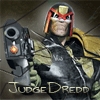Big B
Posts: 4870
Joined: 6/1/2005
From: Old Los Angeles pre-1960
Status: offline

|
Actually my SKS is a mint Russian unit . It has a beautiful laminated wood stock (like the picture below), and it certainly is well made. It is stamped 1950r on the reciever with a Tula arsenal stamp.
I like it, it's a beauty, there is nothing cheap about it - like the Chinese models.
quote:
ORIGINAL: ANZAC_Tack
im surprised by your comments on the M1, i used it and found it a beast by comparison, im a mid size person,and just found the russian weapons more the 'right' size weapon,and less recoil,more rapid fire capable,thus more accurate in most battle ranges. yes the 3006 has better range,hitting power and accuracy,but then i'd use a springfield for this purpose,the battle ranges most casualties accounted in WWII where under 300M,perfect for the 7.62*39 russian.
yeah my sks was cheap also,but quite robust but cheap,i've seen the original russian ones, and would choose one any day over chinese ones of mid 90's.
like the m1a/m14 much better with detachable magazine,auto features,but like the ak47,the m14 was quickly superseded,though the m16 i dont think was as good a jump as the ak47 was...reliability wise the ar15a1 had real problems with no bolt assist, catching foliage with open muzzle flash and poor quality ammunition causing fouling. the m16a2 solved most of these fortunately with ss109 ammo,and better bayonet to boot.
AS for the Garand being a 'beast' - yes it is
However, I'm only 5'7" and I found the length and balance of the M-1 to be very pleasing, for some reason I shoot better with a longer rifle than a short rifle, I think the greater length of the Barrel makes lining up a target easier (or perhaps surer) for me. For handling - I really like the SVT-40, it's a bit thinner in the stock than a Garand or G-43.
@Jeffrey H.
What I didn't like about the sights on an M-16 was that the rear sight had a..."push the tab in and rotate the aperture left or right" system. It was very stiff, it required a tool or a bullet to push the tab in - it wasn't something you casually adjust. And then the peep-sight itself didn't have an elevation adjustment per say. It was just flip the peep-sight to 100 meter, or long range - which gave you a larger or smaller rear peep sight. All in all it wasn't user friendly I thought. You were supposed to battle sight your rifle, making the adjustments at a paper target from about 25 meters. Once you moved your shot group to center - you were supposed to leave it alone and only flip back and forth from short range to long range on the rear peep sight.
It works, but I never cared for it. If I can find a good picture of it I'll post it.

 Attachment (1) Attachment (1)
< Message edited by Big B -- 8/16/2008 5:56:20 PM >
|
 Printable Version
Printable Version














 New Messages
New Messages No New Messages
No New Messages Hot Topic w/ New Messages
Hot Topic w/ New Messages Hot Topic w/o New Messages
Hot Topic w/o New Messages Locked w/ New Messages
Locked w/ New Messages Locked w/o New Messages
Locked w/o New Messages Post New Thread
Post New Thread